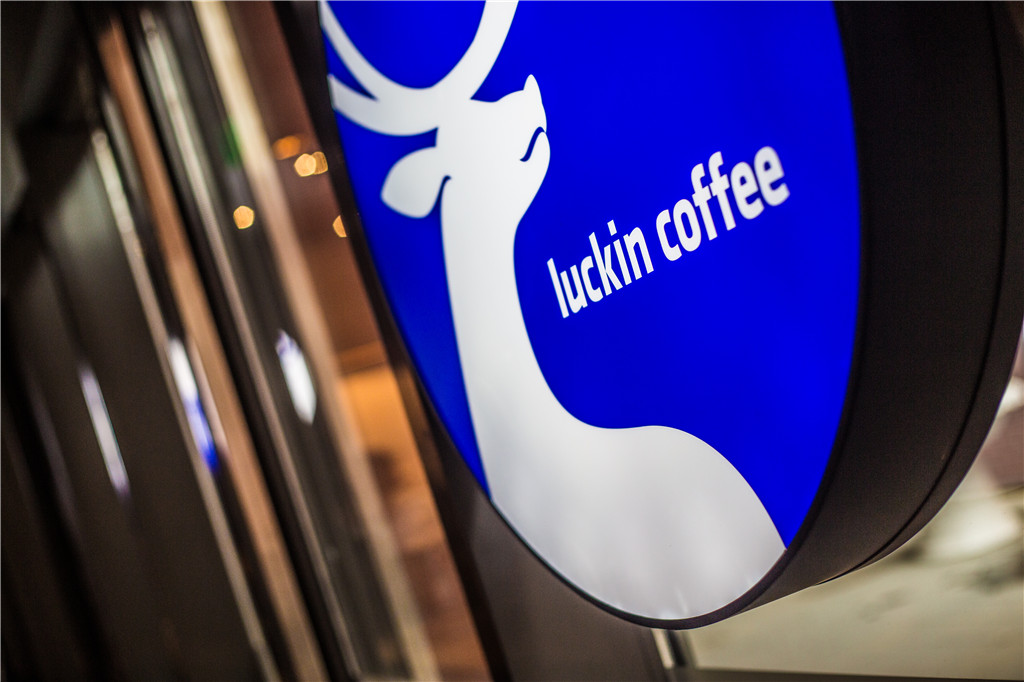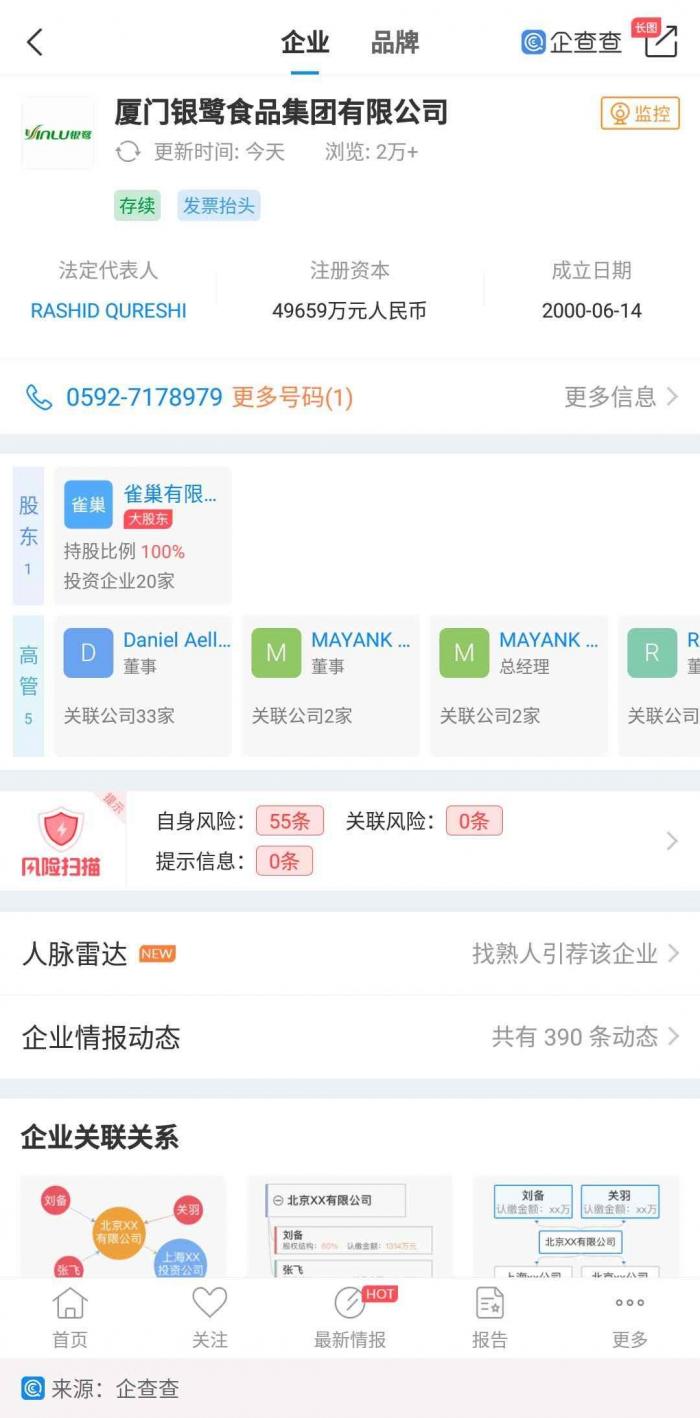Why can Luckin Coffee surpass Starbucks?

Professional coffee knowledge exchange more coffee bean information please follow the coffee workshop (Wechat official account cafe_style)
one
Starbucks responds positively to Lucky's threat for the first time
Luckin Coffee can be said to be one of the hottest topics in the Internet industry over the past year.
Although it has been founded for only one year, Ruixing has become a household name of coffee brand because of its strong financing and marketing ability.
By the end of last year, Ruixing had expanded more than 2000 stores across the country and reached 100% coverage within 500m in the urban core areas of Beijing and Shanghai. Customers can reach the stores within five minutes' walk.
This rate of expansion leaves its peers far behind.
Statistics show that Starbucks has opened more than 3600 stores in China in the past 20 years since it entered China in 1999.
Lucky's latest plan is to open 4500 stores in China by the end of 2019.
This means that if Lucky completes its 2019 plan as scheduled, it will overtake Starbucks in stores and cups and become the largest coffee chain in China without any objection. At the rate of Lucky's expansion, there is a high probability that this will happen.
In the face of Lucky's increasing pressure, Starbucks has to face up to this fierce challenger for the first time in its 20 years in China.
Kevin Johnson, CEO of Starbucks, highlighted the "threat" posed by Luckin Coffee in an interview on Feb. 7, the first time Starbucks has commented on the competitor in front of the media, Reuters reported.
What is worth pondering is that in response to the reporter's question "will Starbucks be overtaken by Lucky in the Chinese market", Johnson answered "unlikely", not absolutely "no way", nor impossible "impossible", but the lack of confidence is unlikely to "unlikely".
Yes, you read it right. In the face of Lucky, the world's largest coffee chain unexpectedly failed.
In fact, no wonder Johnson is like this. Not long ago, Goldman Sachs downgraded Starbucks stock to neutral in its 2019 American restaurant outlook report, also because of Luckin Coffee.
But is that really the case?
two
Is it really because of Lucky that Starbucks failed in China?
In 2018, Starbucks reported its worst results in China in nine years.
Starbucks' same-store sales and operating margins fell in China for the first time in nearly nine years from the beginning of April to the end of June 2018, according to Starbucks' third-quarter fiscal 2018 report.
In order to save the decline, Starbucks immediately announced that it would cooperate with Alibaba to expand online with the help of Ali's many entrances and ele.me hummingbird distribution. As of mid-December 2018, Starbucks takeout business has covered more than 2000 stores in 30 cities.
In addition, Starbucks announced an across-the-board price increase in November, covering coffee, tea and Frappuccino, all by 1 yuan.
Despite all the moves, Starbucks has had little effect in the Chinese market, with its revenue in China growing by only 1%, according to the latest quarterly report, which eventually dragged down its performance in the global market.
What happened to Starbucks? Is it really because of Lucky?
Of course not. The main reasons for Starbucks' failure in China are as follows:
First, the coffee market has turned into the Red Sea.
Since Starbucks entered the Chinese market, it has always been to promote the development of its third space as its main development strategy, so Starbucks has been laid out in the core areas of each city.
However, with the rise of takeout, Starbucks this fixed consumption scene model is not very popular; on the other hand, neighbors, the whole family, 7-11 and so on are making great efforts to develop convenience store coffee.
In this way, Starbucks does not have an advantage in terms of time and unit price, whether in store or takeout consumption.
Second, Starbucks does not have an advantage in the supply chain, resulting in high product prices
As we all know, the price of Starbucks can be called "sky-high" in China, and an ordinary cup of coffee costs 40 or 50 yuan, but it is strange that even with such a high price, Starbucks lost money in the first nine years of entering the Chinese market because of the supply chain.
Although Starbucks has its own coffee growing base upstream and sells packaged coffee in cooperation with Nestl é downstream, Starbucks has failed to gain control, let alone absolute control, in either channel.
As a result, Starbucks coffee beans can also be used by other brands, even at a lower price.
It has to be said that it is a failure for the world's largest coffee chain to fail to gain an advantage in the coffee industry chain.
Third, Starbucks' experience in coffee chain management is not dominant.
Once upon a time, Starbucks' chain management ability was regarded as the "standard", but now its management model has been thoroughly studied by business schools, there is little secret to speak of, competitors can directly copy its experience.
So, in fact, from this point of view, Starbucks' decline in China is doomed, but it is not known who will replace it.
Luckin Coffee is undoubtedly the most popular one at present. But can Lucky really replace Starbucks?
three
Can Lucky really overtake Starbucks?
It is undeniable that Rui Xing is indeed a dark horse. In just one year, it opened more than 2000 stores, sold more than 90 million cups of coffee, and captured 12 million users.
But at the same time, Luckin Coffee's money-burning model has also aroused widespread doubts. Data show that Luckin Coffee lost as much as 857 million yuan in the first nine months of 2018.
In the past, China's Internet money-burning subsidies burned Didi and ofo, but they are all vulnerable to a single blow in the cold winter, which makes people wonder how long Rui who burns money can live.
But lucky is full of confidence, "at present, the company's cash flow does not have any problems, can adhere to 3-5 years not profitable, so do not worry about the shortage of capital chain."
Ruixing started operation in January 2018 and is still in the initial stage of development for the next 3-5 years, which competes for speed and scale, when large-scale subsidies are just marketing tools for the catering industry.
In fact, Starbucks lost money in the first nine years of its introduction to China.
But the question is, does Lucky burn out its core competitiveness?
Starbucks burns money to create a "pretending third space". What about Lucky, the scale? Users? Delivery speed? Product? It is not known yet.
But in the end, Rui Xing is qualified as a "catfish". Whether it is to promote the development of the coffee industry in the direction of online and offline integration, or to let the coffee price be close to the people, this is a change and upgrade for the entire coffee industry, and it is worth encouraging.
Now, the stagnant Chinese coffee market has been stirred, it can be predicted that there will be more competitors to join, will eventually leave a thrilling business story, let time to see.
END
Important Notice :
前街咖啡 FrontStreet Coffee has moved to new addredd:
FrontStreet Coffee Address: 315,Donghua East Road,GuangZhou
Tel:020 38364473
- Prev

You promise not to know the inside story of these six coffee shop chains! Baristas dare to reveal things only when they are anonymous!
Professional coffee knowledge exchange more coffee bean information Please pay attention to the coffee workshop (Wechat official account cafe_style) many people have the habit of drinking coffee in the morning, and in recent years, drinking coffee has gradually become a symbol of taste in life, and has become a daily life of many people, so they will go to the coffee shop in their spare time to buy a cup of coffee to taste. Recently, the Hong Kong talk show "both prestige and wear"
- Next

Nestl é speeds up the layout of coffee and beverage business! Accidentally exposed that it has 100% holding Yinlu.
Professional coffee knowledge exchange more coffee bean information please follow the coffee workshop (Wechat official account cafe_style) this article comes from the 21st Century Economic report with the full occupation of Yinlu and Starbucks, Nestl é's performance in coffee drinks is worth looking forward to. February 13, in response to rumors that Nestl é through its Yinlu Group to achieve full-time convenience stores in Beijing, Tianjin, Chengdu
Related
- What brand of black coffee is the most authentic and delicious? what are the characteristics of the flavor of the authentic Rose Summer Black Coffee?
- Introduction to the principle and characteristics of the correct use of mocha pot A detailed course of mocha pot brewing coffee is described in five steps.
- Which is better, decaf or regular coffee? how is decaf made?
- How much is a bag of four cat coffee?
- How about four Cat Coffee or Nestle Coffee? why is it a cheap scam?
- Which is better, Yunnan four Cats Coffee or Nestle Coffee? How about cat coffee? is it a fake scam? why is it so cheap?
- How about Cat Coffee? what grade is a hoax? which instant coffee tastes better, four Cat Coffee, Nestle Coffee or G7 coffee?
- Process flow chart of coffee making-Starbucks coffee making process what coffee tastes good at Starbucks
- The top ten best coffee beans in the world Rose summer coffee or Tanzanian coffee tastes good
- Yunnan four cat coffee is good to drink?_four cat coffee is a big brand? four cat blue mountain coffee is fake?

